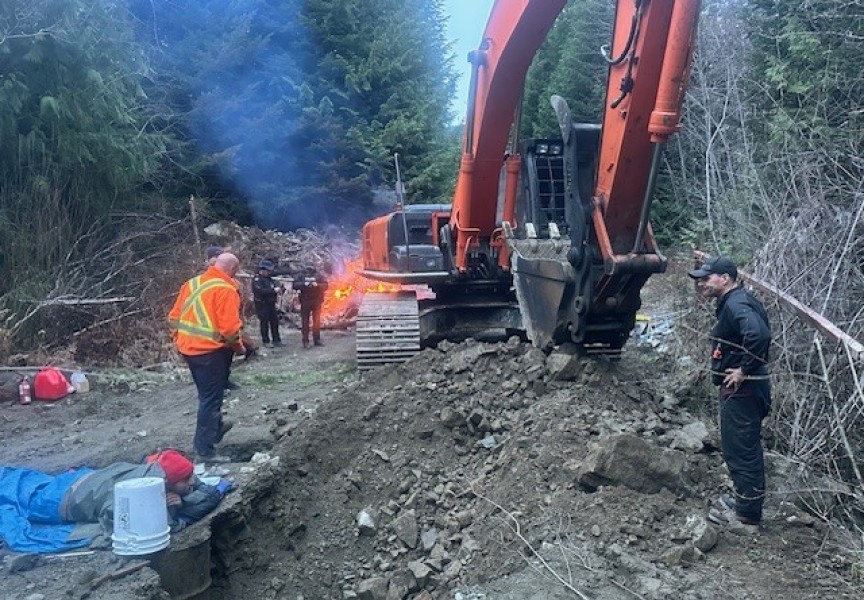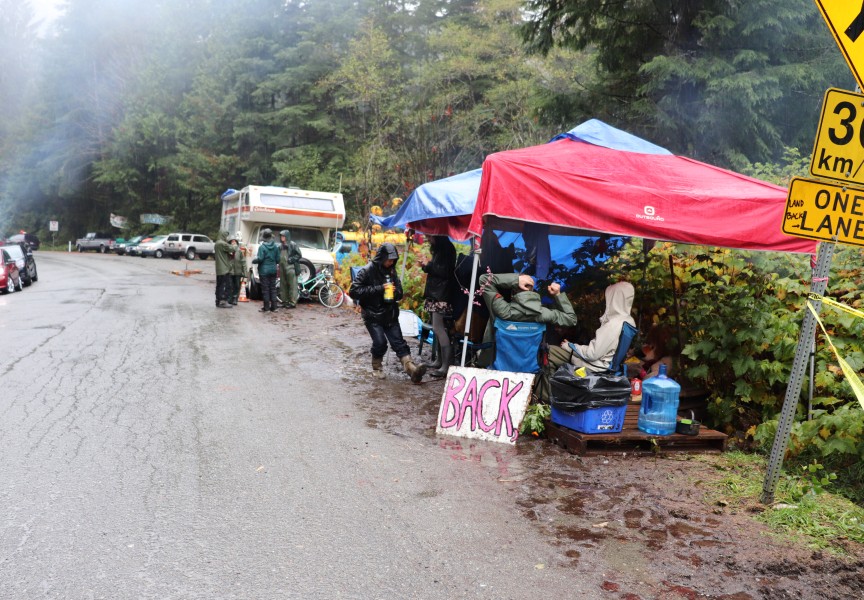Jobs and fibre supply are key factors in a memorandum of understanding between Tseshaht First Nation and San Group, but the new agreement extends beyond business, promising collaboration on a cultural level as well.
“There are so many ways for us to work together,” said Wahmeesh, Ken Watts, Tseshaht chief councillor after the MOU was signed in late June.
“Today is the beginning of our formal relationship,” said Kamal Sanghera, San’s CEO. “We have been working with Tseshaht for a number of years and look forward to a number of important projects.”
A Langley-based forestry company with an emerging presence in the Port Alberni, San arrived in the valley five years ago promising to do business differently. The company prides itself on innovation to achieve new efficiencies with an emphasis on value-added wood product manufacturing and exporting. San’s investment in the forest sector has created a buzz on the Island and stands in contrast to the closure of more than 100 B.C. mills over the past two decades.
“The way San supports this is it gets more value from the wood we process,” said Mike Ruttan, San Group spokesman. “We don’t export raw logs, we create value around the logs we do harvest.”
Since then, the company has followed suit, investing more than $100 million in the valley through purchasing and upgrading the former Coulson Mill just south of Port Alberni for smaller dimension logs. The San Group has also built a remanufacturing plant next to the former Catalyst paper mill (now owned by Paper Excellence Canada).
Last month, San agreed to take over the Port Alberni Port Authority’s deep-water Berth 3 dock with a view to exporting overseas, another $115 million invested. They have a four-hectare site undergoing development on Hector Road and recently purchased from the City of Port Alberni a potential residential development site off Burde Street.
The company exports products to 27 countries and was named B.C. Exporter of the Year in 2018. That strength goes hand in hand with Port Alberni’s strategic advantage as a designated federal port, allowing direct export.
San also tries to create a more established presence in the communities in which it operates, Ruttan said. Its Alberni Valley operations are located in local First Nation territories. The company has signed MOUs with B.C. First Nations before, but this is the first to include co-operation on a cultural level, Ruttan said.
“Certainly, what San is involved in as a core of our business, is processing cedar, which is incredibly important to First Nations people on the West Coast,” Ruttan said. “Initially, it’s all around the fibre,” he stressed.
San Group could see a good amount of fibre coming out of it, he added.
Tseshaht certainly has that to market. Tseshaht First Nation operates five forest companies and three limited liability partnerships, all managed through Tseshaht Forestry Corporation, together with two retail operations, Tseshaht Market and Orange Bridge Cannabis. There is also a desire to diversify beyond forestry and retail, and potential partnership with San Group could be one way of achieving this objective.
“They want to work with us more collaboratively,” Watts said. “We see this as a good opportunity. There may be other developments we can participate in.”
When a new Tseshaht council was elected to office last December, they decided to focus on strengthening partnerships, mending old relationships and creating new ones, Watts said. The MOU with San cements an existing relationship and establishes a framework for further co-operation. Watts described the MOU as a refreshing departure from the norm.
“Not everyone looks at us a stakeholder,” he said. “They look to us as a potential partner.”
It’s not so much about administering forest resources as it is about serving the interest of Tseshaht membership.
“It’s about trying to create jobs and improve value,” Watts said.
As for the cultural side of the agreement, Watts said San has expressed interest in developing cultural recognition around Nuupts'ikapis, a seasonal Tseshaht village site where the remanufacturing plant is located.
San got its start with a small remanufacturing plant in the Fraser Valley in 1979, later expanding into sawmilling and forest harvesting.
Ruttan characterized the company’s approach as one of “long vision.”
“They’re thinking in terms of generations, not just years,” he said.
“It’s a good sign of a potential relationship, I think, showing First Nations and industry can work together,” Watts said, summing up the MOU. “That always sends a good signal to the public.”









